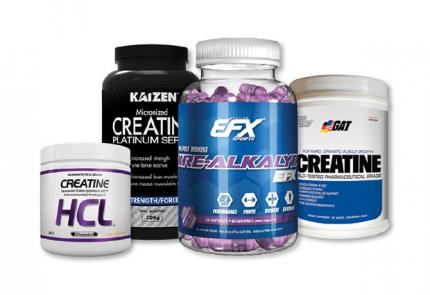Ask the Scientist

Jeff Golini is the owner of All American Pharmaceuticals and EFX Sports. He is a former competitive bodybuilder based in Venice Beach, but he’s also been in the supplement industry as a formulator, patent creator and manufacturer since the 80s. He has a PhD, and lives in Montana where he owns and runs a supplement factory. Jeff’s most famous for coming up with the idea of adding acid buffering ingredients to creatine monohydrate to help ease the damage the stomach acids have on the creatine you consume. This novel idea has created a massive following of buffered creatine users all over the world! Facebook. Instagram, YouTube

The History of Creatine
Creatine is undoubtedly one of the most renowned and widely utilized supplements in the history of our industry. With so much popularity, it’s no surprise this compound also has a great deal of controversy and misconceived notions surrounding its original discovery and introduction to the sports nutrition marketplace.
Over the years, you’ve undoubtedly heard a few different individuals lay claim to being the first to pioneer creatine’s use as an ergogenic aid. Today, I’m going to give you the actual facts as to how this all began, based on my 30+ years of being deeply entrenched in the supplement formulation and manufacturing industry.
Many are surprised to learn that creatine was actually discovered over 180 years ago, in 1832 to be exact, by a French chemist named Michel Eugène Chevreul. Since he noted it was a component of skeletal muscle, Chevreul aptly named it after the Greek word for “flesh,” kreas.
In 1923 scientists determined the average human body contained about 100 grams of creatine, of which 95 percent was found to be stored in muscle tissue. Then, in 1926, the first known scientific study was published in the Journal of Biological Chemistry discussing how creatine promoted weight gain and increased nitrogen balance.
In the late 1980s, Dr. Eric Hultman from the Karolinska Institute in Sweden introduced the practice of creatine loading. And in 1992, his research was published in the Journal of Clinical Science.
After the publication of this article, the owner of a company called Cal Pharm contacted me to discuss the possibility of having my facility, All American Pharmaceutical, manufacture creatine monohydrate for him. Cal Pharm was planning to advertise in Muscle Media 2000 magazine and needed product as soon as possible. Therefore, I immediately began researching how to synthesize the compound. We were able to locate copies of Chevreul’s early journals and paid to have them translated into English. However, further study led us to believe it would take us about 12 months just to build a new plant to synthesize creatine. Fortunately, I was able to locate a small lab in the USA that made creatine but only in “research quantities.” After some quick negotiations, we finally came up with a plan and went into production of creatine for Cal Pharm.
You may find this hard to believe by today’s standards, but it all started with 100 gram bottles that sold for $99 each! This was also long before EAS ever started marketing it. As a matter of fact, one of the former owners called a friend of mine, George Zangas of Marathon Nutrition, in 1994 to ask if he wanted to purchase creatine. However, George told him, “You’re a day late and a dollar short. I’ve already had it on the market through All American Pharmaceutical for nearly a year.”
By 1994, All American Pharmaceutical was in full production of creatine monohydrate at our plant in Billings, Montana. And for the record, Creapure® wasn’t introduced to the marketplace until 1995, as nearly all brands of creatine were coming out of All American Pharmaceutical up to this point.
The next significant shift in creatine technology took place on June 6, 2001, when I introduced Kre-Alkalyn pH-correct creatine to the marketplace. But that’s another story for another time.

